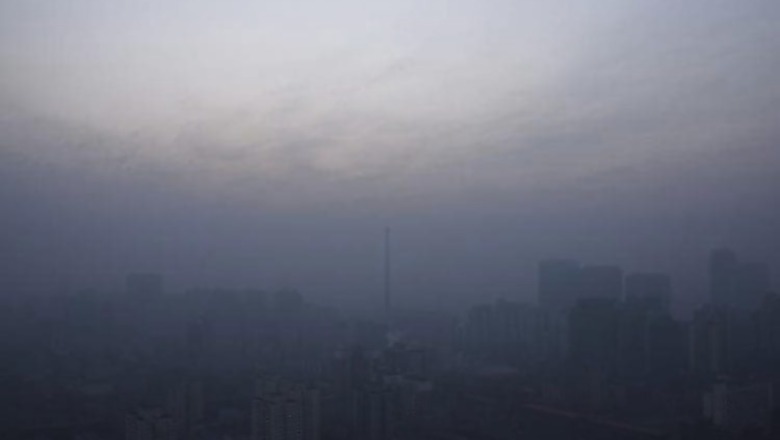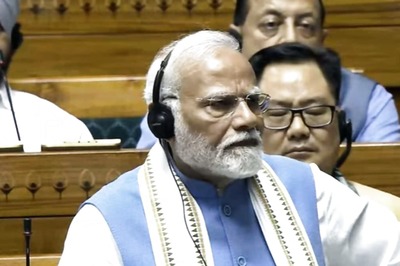
views
Beijing: Automakers' latest projections for rapid growth of China's green car market have added to concerns of worsening smog as the uptake of electric vehicles powered by coal-fired grids races ahead of a switch to cleaner energy.
Volkswagen AG plans 15 new-energy models over 3-5 years, its China chief told a green car conference in Beijing on Saturday, predicting - like the government - that Chinese production of electric and plug-in hybrid vehicles would grow almost six times to 2 million annually by 2020.
At the same event, BYD Co Ltd's chairman told media that the Chinese automaker's electric vehicle sales would double in each of the next three years.
The government has been promoting electric vehicles to cut the smog that frequently envelops Chinese cities, helping sales quadruple last year and making China the biggest market, the finance minister said at the conference. Less than 1 per cent of passenger cars are now new energy, but the pace of growth raises their potential to worsen smog.
A series of studies by Tsinghua University, whose alumni includes the incumbent president, showed electric vehicles charged in China produce two to five times as much particulate matter and chemicals that contribute to smog versus petrol-engine cars. Hybrid vehicles fare little better.
"International experience shows that cleaning up the air doesn't need to rely on electric vehicles," said Los Angeles-based An Feng, director of the Innovation Center for Energy and Transportation. "Clean up the power plants."
China plans to convert the grid to renewable fuel or clean-coal technology as part of efforts to cut carbon emissions by 60 percent by 2020.
That will speed the green impact of electric vehicles, said environmental science professor Huo Hong at the elite Tsinghua university. But that goal will be "really difficult to achieve."
Tsinghua's studies call into question the wisdom of aggressively promoting vehicles which the university said could not be considered environmentally friendly for at least a decade in many areas of China unless grid reform accelerates.
China's industry, environment and science ministries, which devise most new energy vehicle policies, did not respond to requests for comment. BYD and Volkswagen declined to immediately comment.
POLICY MISMATCH
To promote new-energy vehicles, the government has offered various incentives in recent years including tax breaks, and set targets such as having 5 million new-energy vehicles on the road by 2020 - more than 8 times the current number.
Authorities in some cities particularly affected by smog have gone further. Beijing and Tianjin, for instance, have exempted new-energy vehicles from limits on the number of new cars granted licence plates, and exempted them from driving restrictions that other cars face on certain days of the week.
This month, the industrial Hebei province decreed that all new residential complexes must have car-charging facilities.
In western Beijing, 62-year-old retired truck and taxi driver Zhang Zhijun bought a BYD Tang hybrid last month and plans to trade in his petrol-engine Toyota Corolla for an electric car for short rides like taking his grandson to school.
"Right now smog is very heavy in China. This way, if everyone does their part, it will definitely cut down on pollution," Zhang said.
But Beijing, Tianjin and Hebei are all more than 90 percent reliant on coal for energy, Tsinghua's research showed.
Huo and academics point out that, at the very least, the proliferation of electric vehicles pushes more sources of pollution away from heavily populated urban centres.
Whatever the impact, Qin Lihong, president of startup electric automaker NextEV, said cleaning the grid would be the quickest route to clear skies.
"It's much easier for society to make hundreds of power plants better than change the hundreds of millions of cars in thousands of cities," he said.




















Comments
0 comment